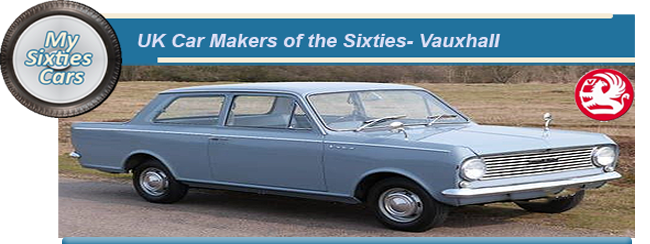
Unlike most of their competitors in the fledgeling UK auto industry who set up their production facilities in the Midlands of England, Vauxhall Motors first saw the light of day in the South of England, more precisely in Vauxhall, a London suburb.
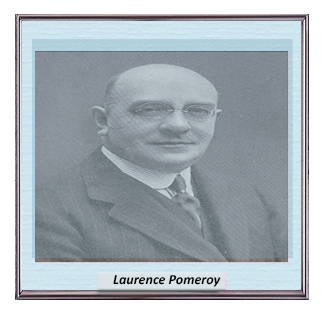 Vauxhall's founder was Alexander Wilson, a marine engineer by profession. Wilson who was born in Scotland who decided to head south in search of opportunities in the “big city”.
Vauxhall's founder was Alexander Wilson, a marine engineer by profession. Wilson who was born in Scotland who decided to head south in search of opportunities in the “big city”.
Wilson founded his company in 1857 with the original intention of producing engineering equipment for the marine industry.
Through a process of trial and error Wilson gradually moved into auto production, revealing their first car in 1903.
.png) The first Vauxhall, which according to the linited records available, to have no name, enjoyed relative success with around seventy models sold in the first year of production.
The first Vauxhall, which according to the linited records available, to have no name, enjoyed relative success with around seventy models sold in the first year of production.
With demand for their products booming, Vauxhall Iron Works, as they were still known, moved out of the cramped premises in Vauxhall, to the expanding industrial city of Luton to the north of London.
With Alexander Wilson long since having moved on from the company he founded, a new face at the helm at Vauxhall Motors was Laurence Pomeroy, who had joined Vauxhall in 1906 shortly after their move to Luton.
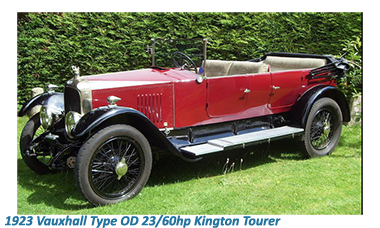 Even though he was still in his early Twenties, the managing director at Vauxhall Motors, Percy Kidner recognised that Pomeroy had tremendous potential.
Even though he was still in his early Twenties, the managing director at Vauxhall Motors, Percy Kidner recognised that Pomeroy had tremendous potential.
Kidner suggested that Pomeroy take responsibility for the design and development of an engine for a car to be entered in the 1908 RAC and Scottish Reliability Trial, in June of 1906.
The Pomeroy engine driven Vauxhalls excelled themselves, and Kidson immediately promoted Pomeroy to head of the design department at Vauxhall.
.png) Pomeroy's first design, the Vauxhall Y-Type Y1 continued to enjoy unprecedented success on the rally circuit, meaning that the company decided to concentrate all of their efforts into commercial production, a decision that was to reap tremendous rewards.
Pomeroy's first design, the Vauxhall Y-Type Y1 continued to enjoy unprecedented success on the rally circuit, meaning that the company decided to concentrate all of their efforts into commercial production, a decision that was to reap tremendous rewards.
Things were going well for Vauxhall until war clouds began to gather over Europe and production for the domestic market was put on hold in 1914, although large numbers of Vauxhall’s bestselling car, the D Type saloon found their way to Europe used as staff cars for the British Army.
In 1918, with the war over, Vauxhall were looking forward to carrying on where they had left off before the war.
![]()
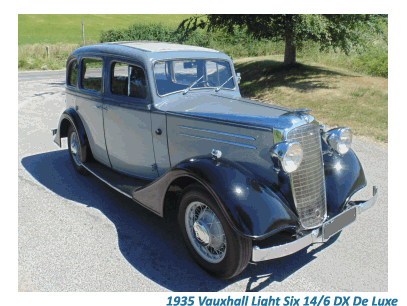 Without the talent and driving force of Pomeroy to push them forward, Vauxhall began to suffer a downturn in sales and profits, with demand for the type of car they had become known for slowly diminishing, despite the auto industry enjoying boom years.
Without the talent and driving force of Pomeroy to push them forward, Vauxhall began to suffer a downturn in sales and profits, with demand for the type of car they had become known for slowly diminishing, despite the auto industry enjoying boom years.
Late in 1925, with their cash flow problems insurmountable, Vauxhall virtually had no option but to succumb to a takeover bid by the massive General Motors Corporation, who paid out a bargain US$2.5 million for the company.
The influence of GM was soon felt at Vauxhall, who quickly began to focus their marketing efforts on an entirely different target market.
Vauxhall‘s change in direction was no simple process, that took more than five years to achieve.
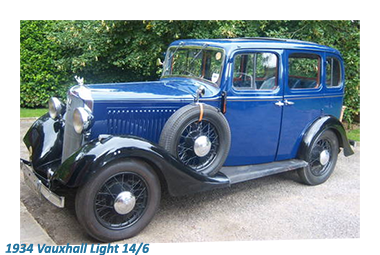 One of the first significant achievements of the new Vauxhall was the increasing demand for the mass market orientated two-litre engined Cadet released in 1930.
One of the first significant achievements of the new Vauxhall was the increasing demand for the mass market orientated two-litre engined Cadet released in 1930.
The Vauxhall Cadet was the first UK produced car fitted with a synchromesh gearbox.
Backed up by GM’s considerable resources Vauxhall survived the difficult years of the Thirties better than others and were beginning to gain significant impetus in the UK market when once again domestic production was halted during the Second World War.
This time having gained considerable experience in truck building through the Bedford division, Vauxhall’s production was switched almost entirely in that direction.
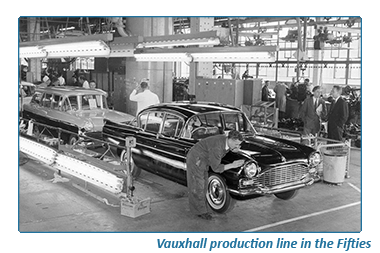 Despite the six years of World War II Vauxhall turned out a total of 5,600 Churchill tanks at Luton as well as 250,000 lorries at their recently completed Bedford plant in nearby Dunstable.
Despite the six years of World War II Vauxhall turned out a total of 5,600 Churchill tanks at Luton as well as 250,000 lorries at their recently completed Bedford plant in nearby Dunstable.
Having survived the war with their factories virtually unscathed, Vauxhall were almost immediately ready to go into production for the domestic market, having already developed three models immediately before the war broke out, which they could release for a hungry market.
To replace these existing models, post-war generation ration Wyvern and Velox models were released in 1948, 1951 and 1957, while a more compact saloon, the Victor, was launched in 1957.By the time the Fifties had come to an end Vauxhall had rightfully gained their place among the top five UK auto manufacturers and looking forward to further consolidating their position during the financially buoyant Sixties.
![]()
Vauxhall emerged rapidly from the Second World war on the back of a product line that was more comprehensive than most of their opposition.
The company's early post war line up included a Ten, Twelve and Fourteen, all carried over from when domestic production was abruptly wound down in the dark days of 1940.
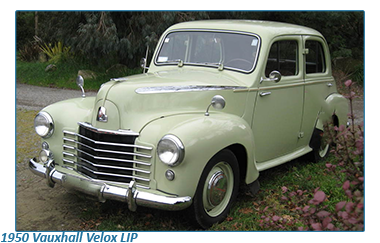 Vauxhall's first new post war creations were the Wyvern and Velox, on the same body but powered by a 1442-cc four-cylinder engine or a 2275-cc six-cylinder.
Vauxhall's first new post war creations were the Wyvern and Velox, on the same body but powered by a 1442-cc four-cylinder engine or a 2275-cc six-cylinder.
Not until 1962 did vestiges of the traditional radiator "fluting" disappear from Vauxhall front ends. Victor styling changed considerably by that time, and engine output grew to 56 horsepower.
A Victor variant with twin carburettors and 71-horsepower rating, known as the VX 4/90, was released simultaneously, that came fitted with front disc brakes among other refinements. Velox and Cresta models added the front discs in 1963, as part of their restyling.
Vauxhall introduced a smaller Viva for 1964, based upon the German-built Opel Kadett with a 1057-cc engine.
For 1965, the Victor range were moved up a peg, now fitted with a 1.6-litre displacement engine.
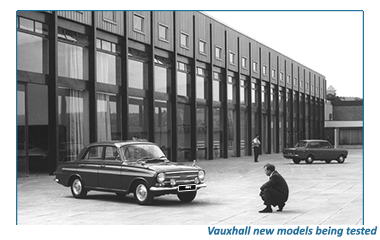 At the same time an upmarket version of the Cresta, the Viscount, was released, fitted with automatic transmission and with its appearance embellished by a vinyl top.
At the same time an upmarket version of the Cresta, the Viscount, was released, fitted with automatic transmission and with its appearance embellished by a vinyl top.
That same year yet another new version of the Victor was released- the FD series. The Vauxhall Victor FD came fitted with a 1599-cc overhead-cam four-cylinder engine, while those who wanted a little or a lot more speed a 1975-cc version was also available, appropriately known as the Victor 2000.
Each version came fitted with a four-speed manual gearbox as standard, four-wheel coil springs, and rack-and-pinion steering.
As a rule, the car's interior trim was always comfortable but far from luxurious.
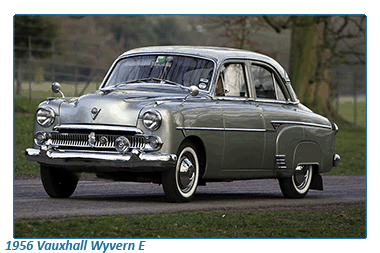 The Victor was typically released as either a four-door saloon or roomy estate.
The Victor was typically released as either a four-door saloon or roomy estate.
Also appearing for the first time was a sporty Ventura sedan, while those who wanted their power in a smaller package could opt for the Viva GT that blended the small HB body with a 2.0-litre Victor engine.
While there were no major introductions of new models as the end of the Sixties approached, the decade had been an exceptional one for Vauxhall as they established themselves as being among the largest volume producers of family saloons and estates in the UK.
More importantly, the company, an offshoot of General Motors was well run and financially stable suffering from comparatively little of the labour problems that had hounded BLMC and the Rootes Group throughout the Sixties.






